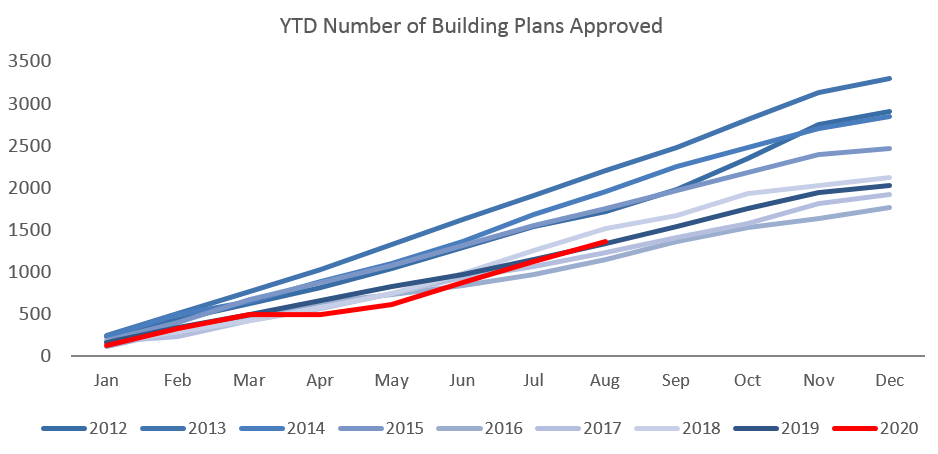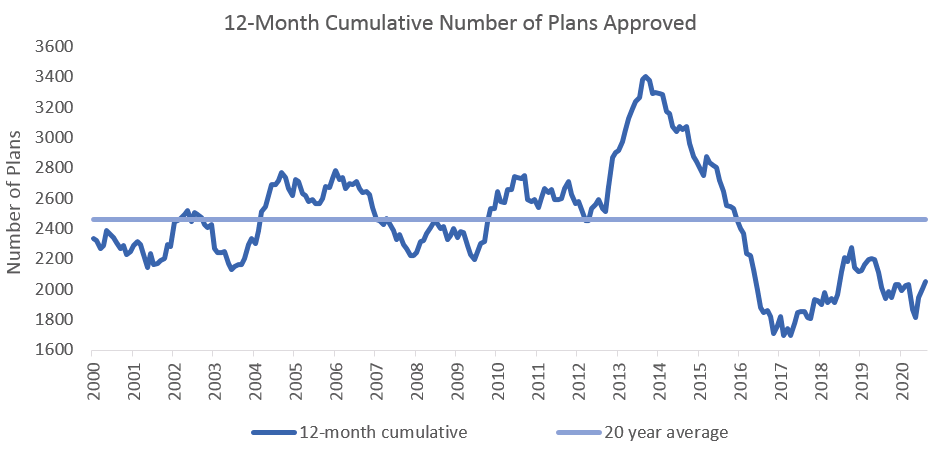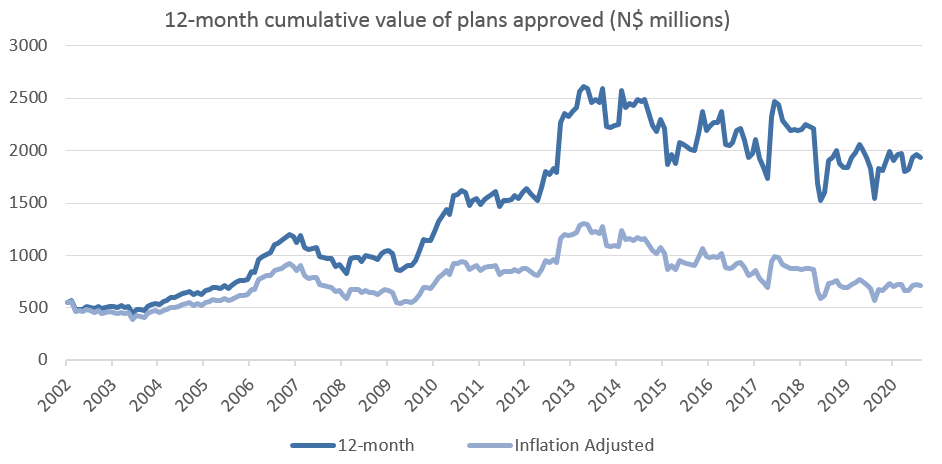
The City of Windhoek approved a total of 235 building plans in August, 10 fewer than in July. In value terms approvals fell by N$29.2 million to N$111.9 million, a 20.7% m/m and 17.4% y/y decrease. A total of 275 completions to the value of N$395.0 million were recorded in August, a rather substantial 183.5% y/y increase in number and 302.5% y/y in value. The year-to-date value of approved building plans reached N$1.08 billion, 5.0% lower than the comparative period a year ago. On a twelve-month cumulative basis, 2,049 building plans were approved worth approximately N$1.94 billion, 25.3% higher in value terms than approvals at the end of August 2019.

The majority of building plan approvals were made up of additions to properties. For the month of August 158 additions were approved worth N$64.0 million, 6.6% more in value terms than in July, although the number of additions approved fell by 7.6%% m/m. Year-to-date, 1,018 additions have been approved with a value of N$453.7 million, a 9.6% y/y decline in value terms. 118 additions worth N$28.7 million were completed during the month.

New residential units accounted for 76 of the total 235 approvals registered in August, 5 more than the 71 residential units approved in July. In monetary terms, N$33.0 million worth of residential units were approved in August, representing a 22.5% m/m and 54.4% y/y decrease. 306 New residential units have been approved thus far in 2020, 22.4% more than during the corresponding period in 2019. The year-to-date value of residential approvals reached N$348.5 million, 12.5% lower than during the same period in 2019. 156 new residential units worth N$353.8 million were completed during the month.

Only 1 new commercial unit, valued at N$15.0 million, was approved in August, bringing the year-to-date number of commercial and industrial approvals to 32, worth a total of N$276.0 million. On a rolling 12-month basis, the number of commercial and industrial approvals have slowed to 51 worth N$616.5 million as at August, representing an increase of 18.6% y/y in number terms and 89.9% y/y in value terms. It is important to note however that these increases are mostly attributable to base effects with a large approval in September 2019 contributing to the increases.

In the last 12 months 2,049 building plans have been approved, increasing by 5.8% y/y. These approvals were worth a combined N$1.94 billion, an increase in value of 25.3% y/y. While this sounds like a strong recovery, the increase is mostly as a result of base effects as a result of very little building activity in 2019. As the graph above shows, on an inflation-adjusted basis, the 12-month cumulative value of approvals is still going down steadily and currently trends at levels last seen in 2010.
The completions data also paints a particularly positive picture when judged at face value. Delving a bit deeper into the numbers however shows that 140 of the 275 completed buildings in August were at Omeya. In our opinion it is unlikely that such a high number of buildings were completed in the month, and could simply be due to the City of Windhoek catching up on its backlog.
Going forward we expect lower value additions to properties to continue making up the majority of approvals.












